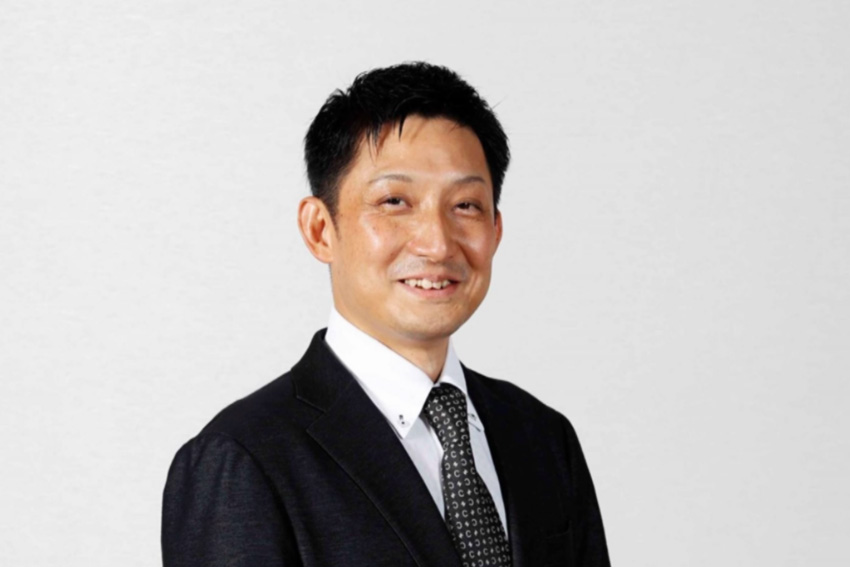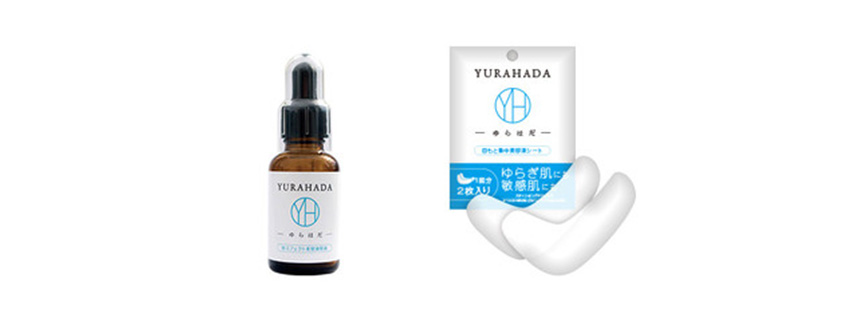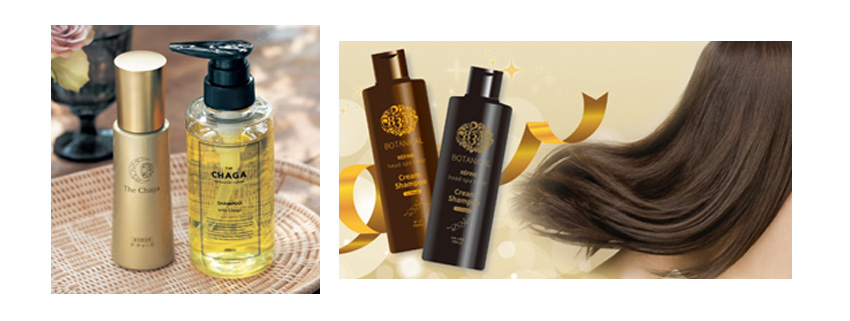The interview provides an insightful discussion of the strengths and weaknesses of the Japanese cosmetics industry, highlighting its emphasis on meticulous quality and safety while acknowledging challenges such as conservative marketing approaches and demographic shifts. Opportunities in men's cosmetics and overseas markets are explored, alongside strategies for understanding diverse consumer needs and leveraging unique ingredients like Chaga extract.

The biggest rival to Japan in the beauty sector is K-Beauty, which has gained significant momentum due to the increased popularity of Korean culture thanks to K-dramas and K-pop. Notable examples of J-Beauty brands include Shiseido and on the B2B side, Nihon Kolmer. With that being said, what are the strengths and weaknesses of the Japanese cosmetics industry today?
Speaking of the attractiveness of Japanese cosmetic quality, I think it is the safety and quality of the products. However, the quality of overseas products has gotten better and better, yet made-in-Japan products are still considered the highest quality by consumers in the global market. I believe that the results stem not only from the inherent quality of the product itself but also from the meticulous attention to detail during manufacturing and handling, including transportation, which are often unseen aspects of the company's efforts. Additionally, Japanese skin tends to be thinner and more sensitive compared to that of individuals in Western countries. Thus, taking into account the users' circumstances, we have established particularly stringent criteria for product development and manufacturing, with a focus on user experience and safety. Consequently, our products undergo development under the most rigorous conditions, rendering them easily adaptable for many overseas users. I am convinced that these elements of Japanese consideration contribute significantly to the creation of excellent products, ultimately enhancing the reputation of Japanese products for their reliability, safety, and high quality.
I mentioned that the national characteristics of Japanese people are working in favor of cosmetic operations overseas, however, in fact, I think there is a penchant for those characteristics to be a double-edged sword. The Japanese mindset is one of precision and cautiousness, and craftspeople will take care of even the smallest details to pursue sincerity in their craft. The quality itself is a core advantage, but at the same time, the Japanese tend to consider humility as a virtue. This creates issues when it comes to marketing products and creating appeal in overseas markets. In comparison to Japan, Korean and Western companies exhibit a high level of innovation and proactivity in their approach to color usage, design, and product appeal. Consequently, I believe they hold a competitive edge over Japan in these aspects. Japan tends to adhere to the philosophy of 'simplicity is best' and often avoids drawing attention or deviating from established norms. As a result, I perceive Japan to potentially lag in terms of innovation and daring compared to its overseas counterparts.
The attention to detail is a hallmark of Japanese manufacturing and one of the reasons for its success. However, this may be under threat since Japan’s population is rapidly aging and shrinking at the same time. This is creating not only a labor shortage, but a smaller domestic market and issues with skill inheritance. Conversely, however, as people age, the need for adequate personal skin care products becomes more and more important. What have been some of the challenges and opportunities this demographic shift is presenting for your firm?
With the diminishing population, it is inevitable to experience a dwindling consumer pool. As you mentioned, an expansion of products and services for seniors is a path we could take, however, as it stands right now I don’t believe this market size to be that big. Rather, a big opportunity we see right now is in the side of men’s cosmetics. I see huge potential for men’s cosmetics here, not only in the domestic market but also overseas in countries that are experiencing significant population growth such as India.
The shortage of labor due to population decline is becoming an increasingly serious issue, especially in Japan's manufacturing sector, where attracting workers has progressively become more difficult over the years. However, in recent times, there has been a growing trend of foreign workers coming to Japan to acquire skills. Japanese companies are actively moving towards hiring foreign workers to alleviate labor shortages, and our company is no exception, actively promoting the recruitment of foreign employees.
While inheritance issues are more challenging for small-scale enterprises, I believe that if we firmly instill the Japanese mindset, even individuals from overseas can adopt an attitude of actively carrying on the tradition.
I believe it is difficult to sustain a business by going against the tide of the times. Therefore, especially in times like these, I believe it's most important to accept the current trends while consistently embracing new challenges. I intend to seize this opportunity to pursue even greater challenges
Men’s cosmetics was one route you mentioned, but you also mentioned targeting bigger populations going forward. When it comes to these growing markets across the world, what is your strategy to tap into those markets? How are you able to understand the needs of these emerging markets?
For overseas operations, I think having a strong local partner is the key to success. We are always seeking good local partners in these kinds of locations. I have personally worked overseas in the past, and based on my experience I’ve learned that skin types are different from country to country. This might be due to a myriad of factors including climate, culture, traditions, and diet. The mindset towards cosmetics is diverse worldwide, so, therefore, having a local partner who understands the needs of local users is a necessity when developing products for abroad.

Serum and Eye patch in collaboration with Svenson
Asian skin differs greatly from Western skin types. It ages slower due to a thick dermis, but due to a thinner stratum corneum can scar more easily and thus is more sensitive. This is a stark contrast to European skin, a market in which we know you have a presence. How do you ensure that your skincare products are suited to different skin types?
When it comes to existing products sold in Japan, I think it can be said that they are manufactured to suit sensitive skin, making them suitable for use by individuals with different skin types. However, the best approach is still to develop products with quality tailored to local needs.
To do so, first of foremost, there is a need to research and understand local people’s skin. Through trial and testing, we can continuously improve our cosmetics so that they are well suited to the clients in local areas.
Chaga Mushrooms have long been noted as an antioxidant with anti-inflammatory properties. Extracts have been used to maintain healthy hair, and we know that your parent company Svenson has focused on these characteristics and even conducted a series of studies on the effects in relation to healthy hair. They are conducting joint research with Tokushima University to develop new raw materials. How have these research programs from your parent company enabled your firm to create new and unique cosmetic products?
Svenson is a haircare specialist company celebrating its 40th anniversary this year. By sharing the insights gained over the past 40 years in haircare, we leverage this knowledge in our cosmetic development to produce uniquely high-quality haircare products. Additionally, Svenson holds a patent for Chaga extract, which is approved for use not only in cosmetics but also as a raw material for Japanese quasi-drugs. With its versatile applications, Chaga extract serves as a highly differentiated ingredient.
The Svenson group is a unique business eco-system, and as such you’ve been able to take advantage of the Chaga essence they’ve patented. What other synergies are you able to leverage as a member of the Svenson Group?
As mentioned earlier, Svenson is a specialized company in the field of hair care, and its accumulated experience serves as a wealth of knowledge. By sharing this accumulated knowledge, we can contribute to the development of better products within our company, with Chaga extract being one such example.
Furthermore, within our group of companies, we have entities engaged in various fields such as salon management, environmental initiatives, and sports ventures. The greatest advantage lies in the ability to share diverse information across these different sectors.

Earlier you mentioned men’s cosmetics and this is a rapidly growing market, that unfortunately is still dwarfed by women’s cosmetics. From a man’s perspective, cosmetics can seem extremely daunting since there are so many different products and regimes. From your company’s perspective, what can be done to encourage more men to use cosmetics, whether that be just basic moisturizers or skincare products?
We are not the ones taking the initiative, rather there are already existing surges for men’s cosmetics globally, especially among young men in their twenties. In the past, men’s cosmetics were more of an all-in-one type, but now, especially with the younger generation, they like to apply multiple products on par with women. This is the trend we are trying to feed into.
Even cosmetic firms like ourselves are surprised by the change in the mindset of young males towards cosmetics these days. I believe it's necessary to achieve clearer differentiation by highlighting the characteristics of products for men and women, even when they are similar.
Your company was founded in 2007 and has specialized in cosmetics and quasi-drugs, but we also know that it is difficult for new firms in Japan to find their footing and establish themselves in the market. What have been some of the challenges you’ve had to face during the short history of your company?
Indeed, there were times when our performance did not grow as expected and we faced challenging periods during our entry into the market. However, at present, I strongly feel that if we engage with our customers attentively and empathetically, the path forward will inevitably open up. However, our motto is “sincerity to take care of customers,” and with that care for individuals, we can understand better the needs of those customers.
As a result, we have been able to develop good products and provide excellent services. Gradually, our credibility has increased, and we have been able to achieve many successes both domestically and internationally. We have also received a lot of support from our customers. Furthermore, in 2017, we became a part of the Svenson Group, which further enhanced our credibility and accelerated our growth. We continue to actively pursue business expansion in the future.
Are there any new ingredients or technologies that your firm is developing in your R&D that you can showcase for us today? Could you outline your R&D strategy in a little more detail?
We are now trying to expand our product lineup by further utilizing the Chaga Essence which was patented by our parent company, Svenson, as an ingredient. Currently, we are developing products in the hair care category, including hair growth serum, shampoo, hair treatments, and eyelash serum, as well as new products such as eyeliners and mascaras.
Chaga is a natural ingredient in the cosmetics industry, however, the industry as a whole utilizes both natural and synthetic ingredients, both with their pros and cons. Synthetic ingredients are highly precise and consistent, but have sustainability issues, while natural ingredients are more sustainable and thus better for the environment. As a firm in OEM cosmetic development, where do you stand on the use of natural and synthetic materials? Which one do you prefer?
As you put it so well, natural ingredients and synthetic ingredients both have a list of pros and cons. From the perspective of SDGs and ESG, of course, using natural ingredients is a no-brainer, however, in terms of meeting the specific needs of customers and environmental sustainability issues, the use of natural ingredients may not always be the correct option. Taking a good balance of both natural and synthetic might be the best approach to meet customer needs while maintaining the environment and promoting environmentally friendly products at the same time.
When talking about SDGs you have to consider that the cosmetics sector is leaving a significant environmental footprint. The sector produces at least 120 billion pieces of packaging each year, with 95% being thrown away. Furthermore, many products are creating a high demand for natural oils leading to extensive and intensive cultivation, putting a burden on natural habitats due to increased deforestation and increased contamination of soil and water through the use of pesticides and fertilizers. What are some of the actions your firm is taking to reduce its environmental impact?
It is true that in terms of recycling, unfortunately, the Japanese cosmetics industry is lagging when compared to overseas. However, these days, there is significant awareness of the importance of SDGs within the cosmetics industry as a whole as well. Several active steps are being taken by our company. The first initiative we have instigated is the conversion of plastic bottles to a biomass-derived material. In fact, within our group companies, most products now utilize this biomass-derived material in their containers, and we are working on reducing plastic usage. We are also actively working to reduce our electricity usage and conserve energy, both in the workplace and in our daily lives.
You have clients around the world in Europe, Thailand, Singapore, and Israel just to name a few. Moving forward, what countries or regions have you identified for further expansion?
Regarding future overseas expansion, we aim to target the entire world. However, conducting everything simultaneously is challenging. Therefore, we plan to focus initially on emerging markets such as India, and gradually expand our coverage to encompass the entire Asian region, including Vietnam and Malaysia. Once we have established a presence in Asia, we intend to expand into the Middle East and throughout Europe, delivering the excellence of Japanese products to people worldwide.
Imagine that we come back and have this interview all over again in 2027. What goals or dreams would you like to have achieved by the time we come back for that new interview?
Our focus for the long-term and mid-term is overseas expansion. When we meet again, our goal is to be recognized worldwide as the number one global company among Japanese cosmetics OEM companies, and we will strive to achieve this.
For more details, explore their website at https://oem-cosmetic.com/en/
0 COMMENTS